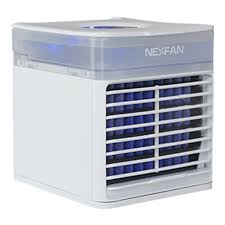All over the United States, manufacturing facilities produce tons of animal feed and pet food, ensuring our four-legged friends with adequate nutrition and a balanced diet. The online shopping trend has increased faster since the pandemic – it’s more convenient and requires less effort. As a matter of fact, big names in the animal nutrition industry are striving to enter the world of eCommerce to solidify their brand name in the market. The United States animal feed and pet food manufacturing industries make notable contributions to the economy, driving growth across the national economy and in the county and states where facilities are located. According to a study undertaken by American Feed Industry Association (AFIA), animal feed and pet food makers will generate roughly $267.1 billion in sales this year, a figure that includes an estimated $98.4 billion in value-added revenue and $18.5 billion in local, state and federal taxes.
The 83-page report issued by Decision Innovation Solutions (DIS) demonstrates that the animal nutrition industry drives economic recovery in rural and urban communities alike, remaining resilient in spite of the stress that can only be understood if put in a historical context. Competition is one of the most complex challenges, but so are the never-ending climate crisis, human-induced actions that exploit the land, and water shortage for realizing sustainable production systems. Getting back on topic, nutritionally balanced and safe food does more than feed domesticated livestock and pets. The animal feed and pet food manufacturing industries generate economic activity across the supply chain by leveraging related services (e.g., truck and rail transportation services and industries (e.g., financial institutions).
How Many People Are Employed in The Animal Feed and Pet Food Manufacturing Industries?
Employment is a chief component of economic growth. To be more precise, when individuals have jobs, they have more money to spend on goods and services, therefore, helping businesses grow and create more jobs. A great many people and different skill sets go into making animal feed and pet food, providing opportunities to individuals with all kinds of backgrounds and strengths. The animal nutrition industry employs approximately 760,00 full-time and part-time contract employees, paying $55 billion in salaries and employee benefits before the end of 2023. Success in the market isn’t without challenges, regrettably. Missouri has the most employees, with over 54,350.
The animal feed and pet food manufacturing industries are facing a major shortage of qualified technical talent. Scientific advancements are slowly but surely driving the pace of manufacturing. At present, most facilities are hubs of advanced machinery, so companies are looking for technical people to give them a competitive edge. Manufacturers must be ready to take advantage of food processing equipment, for instance, while managing their risks. What they need is people who can understand the science. More jobs are available than employees, and taking into account how complex the roles are, the talent pool becomes narrower. The animal nutrition industry ensures remuneration levels are high enough so that other industries don’t recruit talented people.
California Will Be Particularly Favorable to Animal Feed and Pet Food Makers
California leads the way as regards animal feed and pet food sales, with an estimated $19,5 billion. The quantity and diversity of animal feed commodities in California make it the largest manufacturer in the United States. Attention must be paid to the fact that California has more stringent food safety regulations, livestock drug regulations, and environmental policies. Many cities in California are pet-friendly, so dogs and cats can relax at their own resorts and receive acupuncture for stress, not to mention that owners can shop at local boutiques for clothes, food, and accessories. Millennials are more generous spenders, acquiring gifts for their furry friends at least once a month.
As highlighted by the American Feed Industry Association, other performing states will be Missouri ($18.6 billion), Texas ($17.1 billion), Iowa ($6.5 billion), and Kansas ($16.2 billion). Animal food may include grains, vitamins, milling by-products, fats/oils, minerals, and other energy sources. Federal regulations require that ingredients be listed on the packaging by their common name or usual name in descending order according to weight. There are several options to choose from, of which mention can be made of dry, canned, raw, freeze-dried, all-natural, and grain-free. At times, it’s not possible to decide if a product is right just by reading the ingredient list because the precisely formulated nutrients are just as important.
Sustainability In the Animal Feed and Pet Food Manufacturing Industries
The animal feed and pet food manufacturing industries are dedicated to working to improve sustainability efforts, meaning that CEOs and corporate boards are fully engaged in the strategy, taking ownership of objectives and meeting them. Sustainability is embedded in business from product development onward, including an advantage within the value chain. The American Feed Industry Association recognizes the role the animal nutrition industry plays in reducing food waste and agriculture’s carbon footprint and developing much-needed tools and resources that help improve practices globally. The pressure to produce more on the same amount of land is a challenge, but not one impossible to solve.
By means of processing, the physical, chemical, and edible properties of food materials can be altered so that they become usable once more. Companies such as KSE Process Technology make available various mechanical equipment for the treatment of raw materials. Alfraequipment, in particular, helps measure the quantity of the food material during the dosing process, which in turn is used to create an accurate flow of powder. Knowing the right amount is helpful for recipe management and production time schedule. In practice, there’s always room for improvement to make animal feed and pet food processing even more sustainable.
The Takeaway
To sum up, the animal feed and pet food processing industries will propel the United States’ self-sufficient economy in the wake of the latest economic downturn. Startups are able to move rapidly to enforce cutting-edge technologies, and the lack of oppressive bureaucracy allows leaders to develop and refine ideas via innovative methods. Nevertheless, there are complications when it comes to ingredient procurement, finding/retaining employees, packaging sourcing, managing freight, and so forth. Based on the American Feed Industry Association’s report, 2023 will be a positive year.







Recent Comments